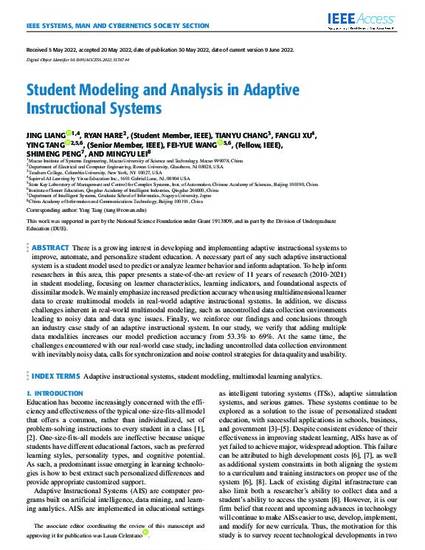
There is a growing interest in developing and implementing adaptive instructional systems to improve, automate, and personalize student education. A necessary part of any such adaptive instructional system is a student model used to predict or analyze learner behavior and inform adaptation. To help inform researchers in this area, this paper presents a state-of-the-art review of 11 years of research (2010-2021) in student modeling, focusing on learner characteristics, learning indicators, and foundational aspects of dissimilar models. We mainly emphasize increased prediction accuracy when using multidimensional learner data to create multimodal models in real-world adaptive instructional systems. In addition, we discuss challenges inherent in real-world multimodal modeling, such as uncontrolled data collection environments leading to noisy data and data sync issues. Finally, we reinforce our findings and conclusions through an industry case study of an adaptive instructional system. In our study, we verify that adding multiple data modalities increases our model prediction accuracy from 53.3% to 69%. At the same time, the challenges encountered with our real-world case study, including uncontrolled data collection environment with inevitably noisy data, calls for synchronization and noise control strategies for data quality and usability.

Open Access under a CC-BY license - IEEE is not the copyright holder of this material.